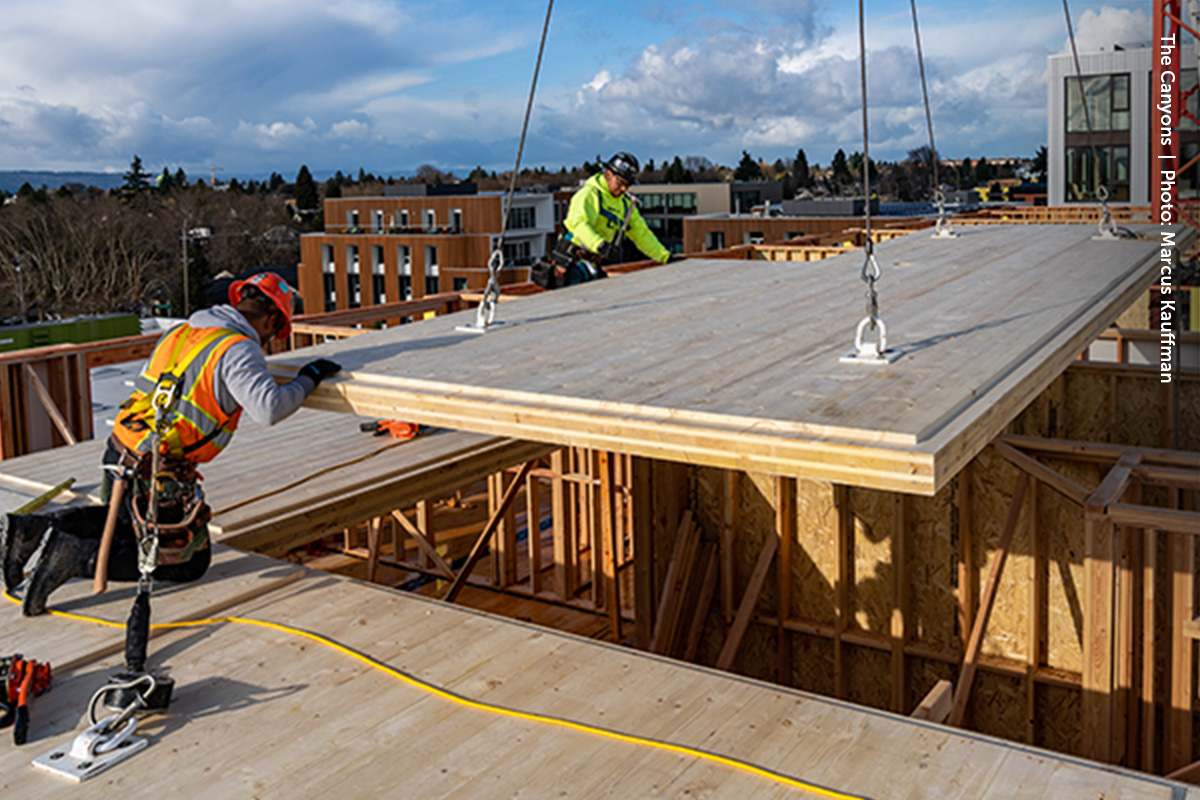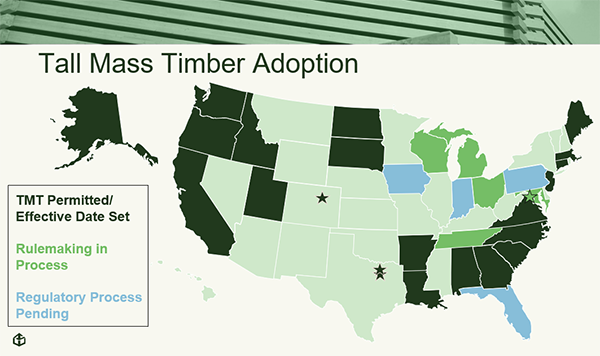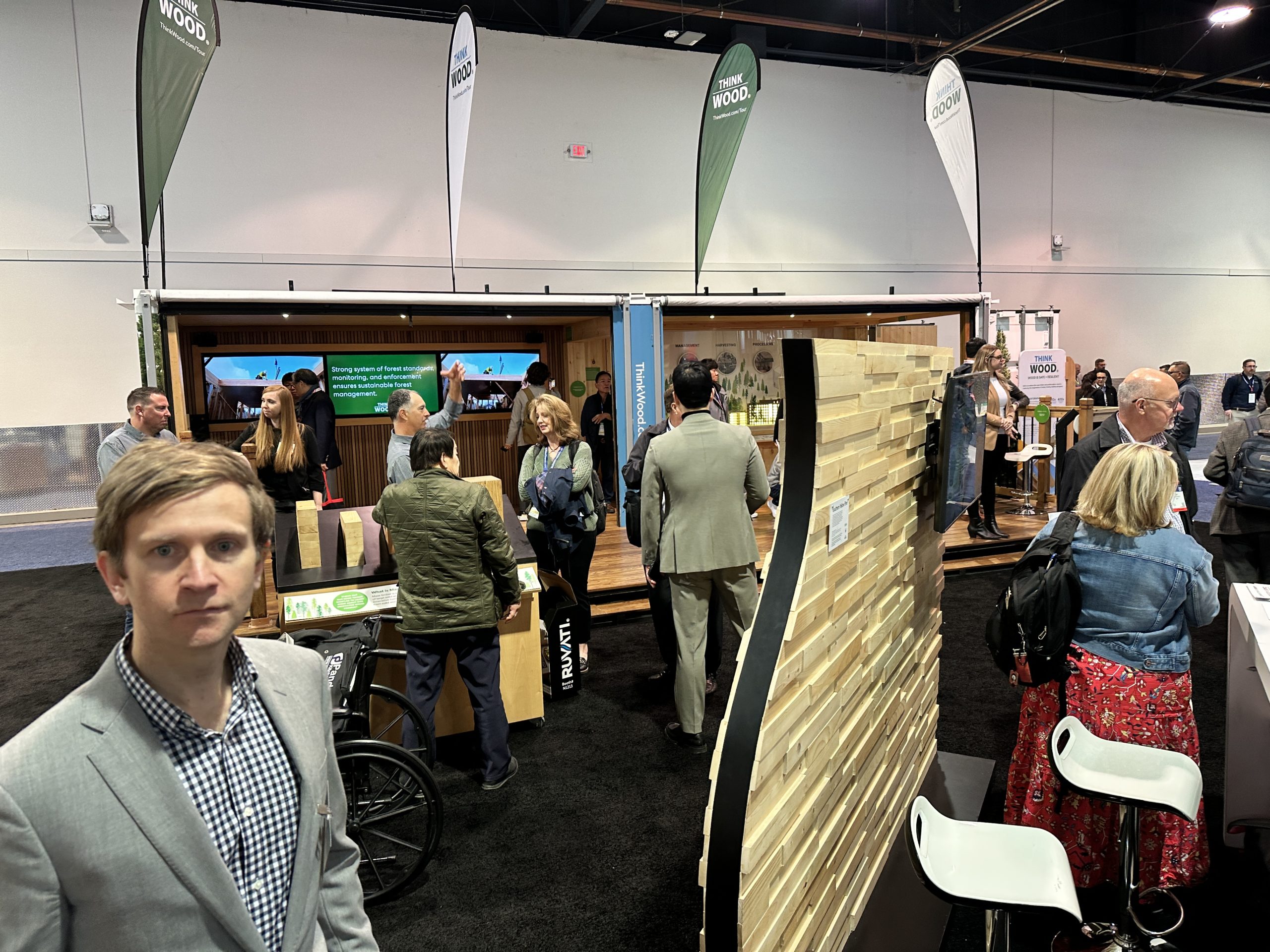HIGHLIGHTS
Program Updates
WoodWorks Releases Open-Source Mass Timber Installer Training Curriculum

With the release of 10 mass timber installer training modules, WoodWorks has further expanded the ability of design and construction teams to pursue mass timber projects across the U.S. Intended for use by contractors, subcontractor erectors, training centers, community colleges, and workforce-development programs, the modules complement other WoodWorks efforts to ensure that qualified workers are available to install mass timber projects.
The release of installer training curriculum for anyone who wants to use it is a significant milestone. When WoodWorks launched its Mass Timber Construction Management Program in 2019, there was a critical gap in knowledge and skills among contractors and installers. Developers and building designers were eager to use mass timber, but most contractors were unfamiliar with the materials and skewed budgets high to cover unknowns, scuttling many projects. Since then, WoodWorks has developed education and technical content tailored to the needs of project managers and estimators as well as field team leaders and installers to help ensure competitive pricing and contribute to a growing pool of trained workers.
Available on the WoodWorks website, the 10 training modules include: Introduction to Mass Timber; Connection Considerations; Beam and Column Connections; Panel Connections; Fasteners, Hardware and Equipment; Safety Considerations; Planning and Coordination; Material Protection; Installation; Repairs, Finishes, and As-Builts.
Since their launch in January, the modules have been downloaded by nearly 400 construction and framing professionals, developers, architects, engineers, educators, and others seeking content on the proper and safe construction of mass timber buildings.
The AWC Uses Education and Articles to Encourage States to Adopt TMT Provisions; 19 States Signed On So Far

Nearly 20 states have adopted either the 2021 IBC or the 2018 IBC with amendments to incorporate provisions for tall mass timber. South Carolina and North Carolina are the most recent states to adopt requirements of the 2021 International Building Code, each with an effective date of January 1, 2023.
In addition to picking up new tall mass timber provisions of the 2021 IBC, adoption of the 2021 IBC brings forth formal recognition of the latest wood design information in its referenced documents, including the AWC’s 2021 Special Design Provisions for Wind and Seismic, 2021 Permanent Wood Foundation Design Specification, and 2021 Span Tables for Joists and Rafters.
The AWC has been focused on providing education on the tall mass timber provisions and AWC standards to ensure these states are prepared for plan reviews. Recent training sessions have included code officials from Georgia, North Carolina, South Carolina, and Tennessee. Tennessee is important because stakeholders in the state held several meetings last year and are seeking adoption of the 2021 IBC in early 2023. To further support Tennessee adoption of the 2021 IBC, the AWC is preparing for several half-day education sessions that will be held across the state this year.
Spotlight
The Visualization Problem of Embodied Carbon
In a recent column for Treehugger called “How to Understand the Scale of Embodied Carbon,” Lloyd Alter takes on one of sustainable design’s enduring public relations challenges: how to get the general public to better understand the sheer scale and impact of embodied carbon savings on the built environment. “Whenever we talk about fixing old buildings instead of tearing them down and replacing them, you can see eyes glazing over. They say the new building will be sustainable and energy efficient! Or, where I live in Toronto, they will tear down a 20-story rental apartment building to build a 50-story condo building and say, ‘We need more housing’,” Alter writes. But “when we bring up the embodied or upfront carbon produced to replace the building, those eyes start rolling.”
Alter cites Will Arnold, an engineer who currently serves as head of climate action at the Institution of Structural Engineers and previously worked at ARUP, where he wrote an article titled “Reducing Carbon Emissions … Every Working Day.” Arnold equates the carbon in buildings to relatable statistics in everyday life to show the scale of impact. When people think of their own carbon footprint, air travel and driving are tangible concerns, he argues, so he clocks a one-way flight from London to New York as consuming 1 metric ton (1 tonne) of carbon and driving the average family car 10,000 miles at 3 metric tons of carbon. But, he points out, just a 1% reduction in the carbon footprint of a building could save 100 metric tons of carbon.
Assessing carbon savings by relatable daily activity, Alter says, makes it easier to visualize: A 10% reduction in the carbon footprint of a building—or 1,000 metric tons of carbon savings—as being equivalent to 1,000 transatlantic flights (more than most people will ever taking in their lives), is something that people can relate to. And that relationship is important: When the idea of the scale of carbon savings possible in the built environment is difficult to grasp, it is easier to swallow the decision to tear down one tower to make room for another. But when people understand how even small reductions in the carbon footprint of buildings can make a big difference, the impact of selecting building materials for their embodied carbon benefits becomes clear.
Industry Resources
FEA’s Housing Dashboard
This housing dashboard is provided compliments of Forest Economic Advisors (FEA).
View the February Dashboard
Virginia Tech's Monthly Housing Report
This monthly housing commentary report is a free service of Virginia Tech and is intended to help one gauge future business activity in the U.S. housing market.
December 2022 Reports (released in February 2023)
Part A: December Housing Commentary
Part B: December Economic Conditions


